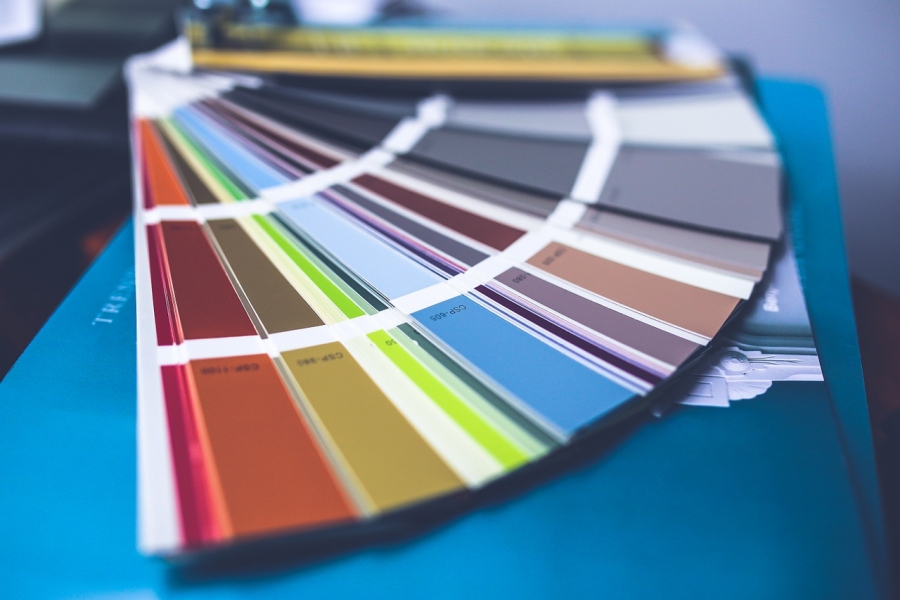Having trouble sleeping? Or staying awake? Feeling down? Or stressed? Maybe you just need a new paint color.
Turns out that the colors you use in your home can impact more than just the way it looks.
"Home decor is often viewed as simply a matter of aesthetics - what looks attractive. But proponents of color psychology believe that the colors you use to decorate your home can have a profound effect on the emotional well-being of you and your family," said WebMD.
So how does it work?
"While perceptions of color are somewhat subjective, there are some color effects that have universal meaning," said verywell. "Colors in the red area of the color spectrum are known as warm colors and include red, orange and yellow. These warm colors evoke emotions ranging from feelings of warmth and comfort to feelings of anger and hostility. Colors on the blue side of the spectrum are known as cool colors and include blue, purple and green. These colors are often described as calm, but can also call to mind feelings of sadness or indifference."
Which color is right for you?
Think a sunny, yellow room may brighten up your spirit? Give it careful consideration. Yes, "Yellow captures the joy of sunshine and communicates happiness. It is an excellent choice for kitchens, dining rooms and bathrooms, where it is energizing and uplifting. In halls, entries and small spaces, yellow can feel expansive and welcoming," said Freshome.
But, "Even though yellow although is a cheery color, it is not a good choice for main color schemes. Studies show that people are more likely to lose their temper in a yellow interior. Babies also seem to cry more in yellow rooms. In large amounts, this color tends to create feelings of frustration and anger."
And, of course, there's also a matter of personal taste. It's not important that a splash of yellow brightens up a dark bathroom if you despise the color so much it makes you irate every time you enter.
If you have a busy life and manage a lot of stress, blue might be a good answer for you. This color symbolizes serenity and "is said to bring down blood pressure and slow respiration and heart rate," said Freshome. "It is often recommended for bedrooms and bathrooms."
Other colors that work well in the bedroom: green, which also tends to have a relaxing, calming effect and can also work great in a home office because it tends to focus the eyes and the mind, thereby increasing concentration, and white, which keeps everything clean and calm.
White "conveys peace, simplicity, and spaciousness," said Debbie Zimmer, color expert at the Paint Quality Institute, on Professional Builder. Not to mention that, "used throughout a room, it can give the illusion that the space is bigger than its physical dimensions."
While red is a color that denotes passion, it's not recommended for a bedroom because it can raise the blood pressure, heart rate, and energy level, and keep you awake. Instead, use it in a dining room, where it can help stimulate the appetite - and the conversation.
"Warm tones like reds, yellows, and oranges, and earth tones like brown and beige often work well in both the living room and foyer, because they're though to stimulate conversation," said WebMD.
Use orange in a game room or especially a home gym, and it may inspire just the right emotion and increase well-being. "This color is great for an exercise room; it will bring out all the emotions that you need released during your fitness routine," said Freshome. "In ancient cultures, orange was believed to heal the lungs and increase energy levels."
Deep, rich like colors like purple, black, and emerald can impart a sense of luxury and sophistication, but, especially with black, you want to use a light hand. "Don't get carried away with it," said Zimmer. "Too much black can be depressing."
Choose the right hue
When considering the colors for different rooms, it's also important to remember what certain hues can do to a space. "Light colors are expansive and airy, making rooms seem larger and brighter," said Freshome. "Dark colors are sophisticated and warm; they give large rooms a more intimate appearance."
"Bright yellow…can quickly move from cheerful to abrasive," said HGTV. "Rather than painting an entire room the color of McDonald's golden arches, choose a toned-down shade or use that vivid yellow as an accent against a neutral backdrop, like gray." Likewise, "A pastel blue that looks pretty on the paint chip can come across as unpleasantly chilly on the walls and furnishings…especially in a room that receives little natural light," said Freshome.







